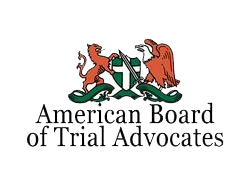One of the biggest nightmares for soon-to-be parents is that their child is not born healthy. While many factors are sometimes completely out of the control of parents, such as hereditary conditions or illnesses that occur during the fetus’s development, some disorders, such as cerebral palsy, often occur during a baby’s delivery, and may be due to actions or inactions by the medical team during labor.
Cerebral palsy is an umbrella term that covers a few possible disorders that affects a baby’s body movement and brain function. It typically occurs when a baby’s oxygen flow is disrupted during delivery or from an injury to a baby’s brain either during delivery or while the baby is still in the womb. There are a few situations that may result in a child suffering from cerebral palsy. They include but are not limited to: harmful or incorrect drugs prescribed during the mother’s pregnancy; an extremely premature birth of a child; prolonged or excessive bleeding to the brain of a child during delivery; or the doctor’s failure to recognize a need for oxygen to the baby, often occurring during delayed deliveries or cesarean section deliveries.
Symptoms of cerebral palsy may not be recognized immediately following the birth of a child, but may develop later. The child may have difficulty rolling over or crawling, smiling or talking, decreased or abnormal muscle tone, unusual posture, floppiness of the limbs or poor coordination or even vision and hearing problems.
Doctors may be held liable for negligence if it can be proven that they caused or were a factor in the injury to the child. This may not be easy to prove, so getting more information about birth injuries may be helpful in getting a favorable outcome.
Source: findlaw.com, “Birth Injuries: Cerebral Palsy and Erbs Palsy,” Accessed Jan. 9, 2017

EXPERTLY REVIEWED BY
John A. Davis, Jr. and Steven R. Davis
August 4 2023
Steven R. Davis and John A. Davis, Jr. are experienced attorneys at Davis & Davis, a law firm that specializes in medical malpractice cases in Texas. With a deep commitment to justice that guides their ethical approach, Davis and Davis have dedicated their careers to helping victims of medical negligence. They and their team continue to advocate for clients, despite the challenges posed by Texas's cap on recoverable damages in malpractice lawsuits. Davis & Davis pride themselves on their extensive experience in the field and their readiness to meet clients across the United States.
✓ Fact Checked








